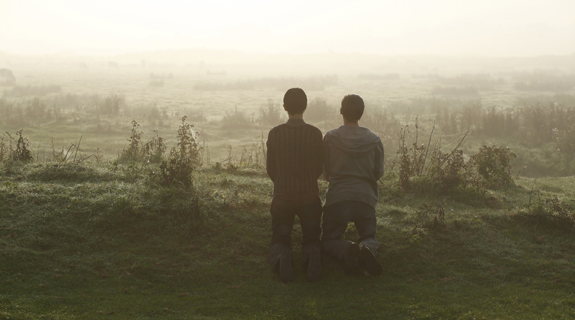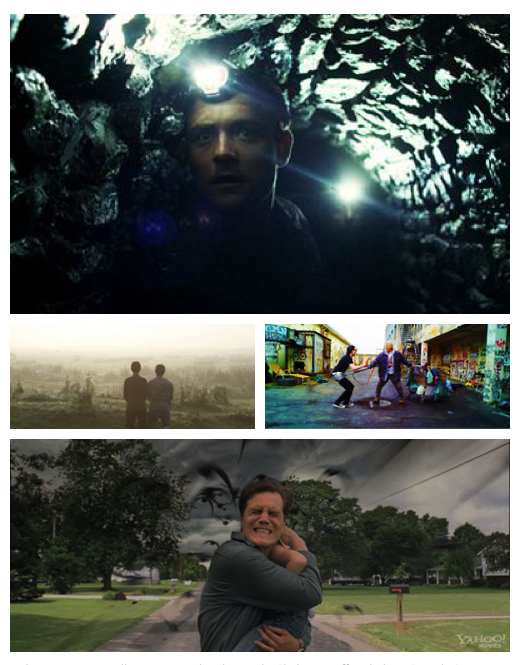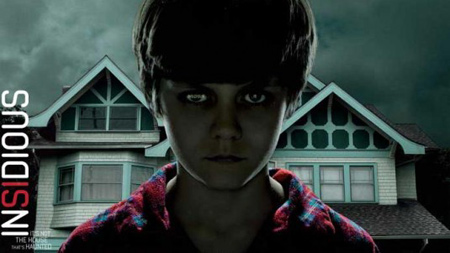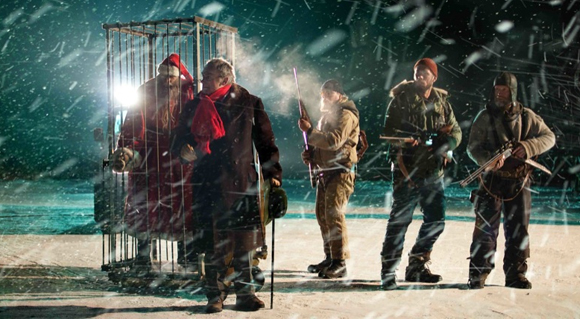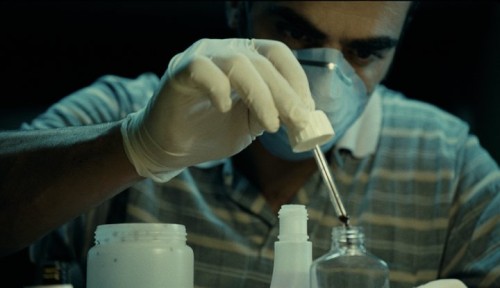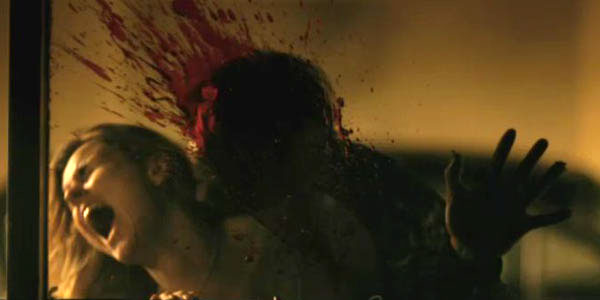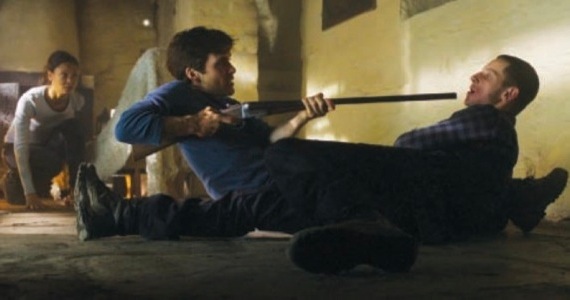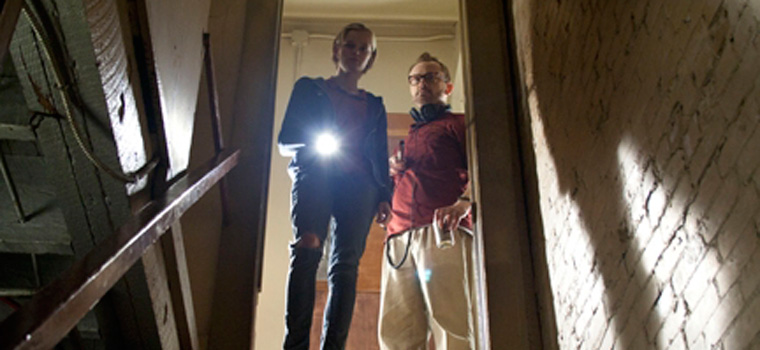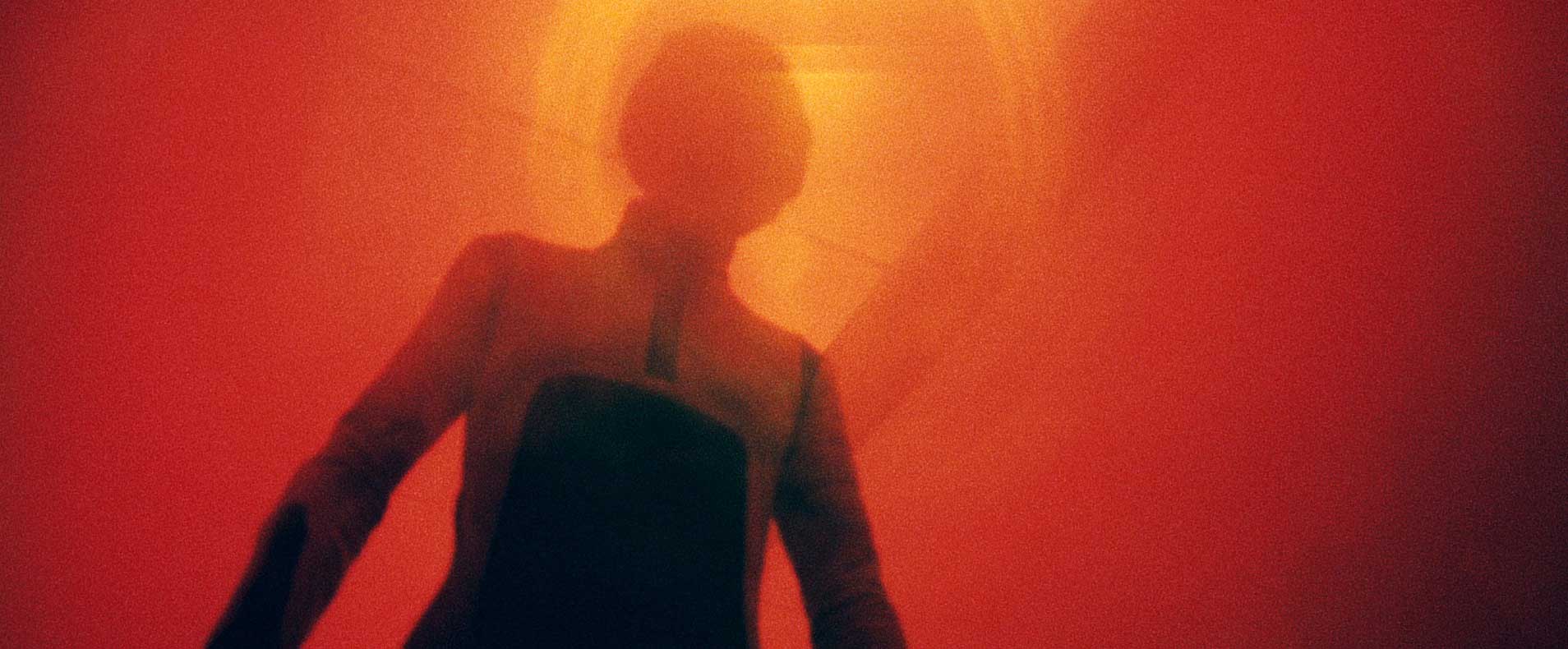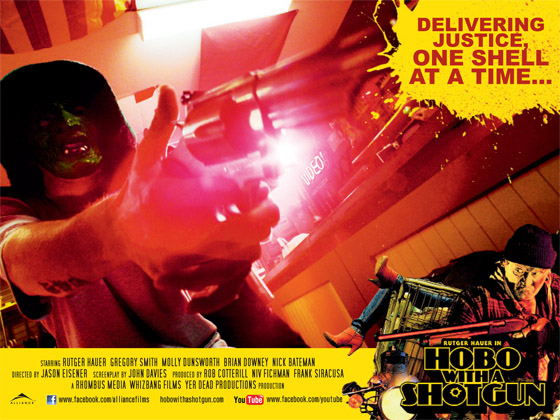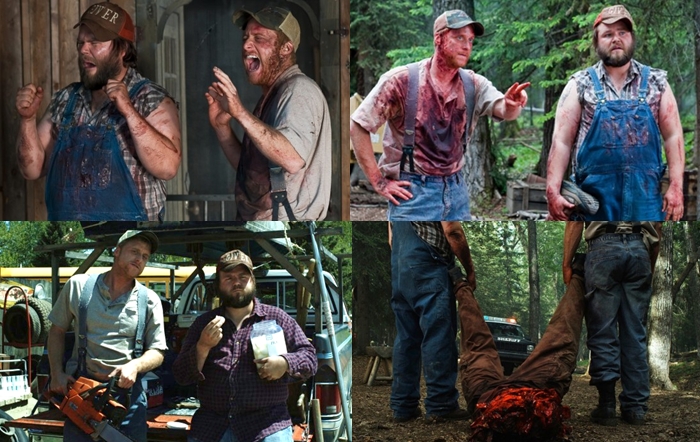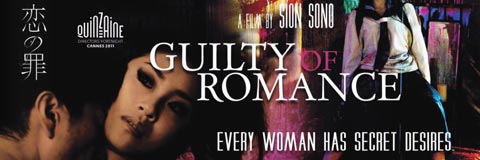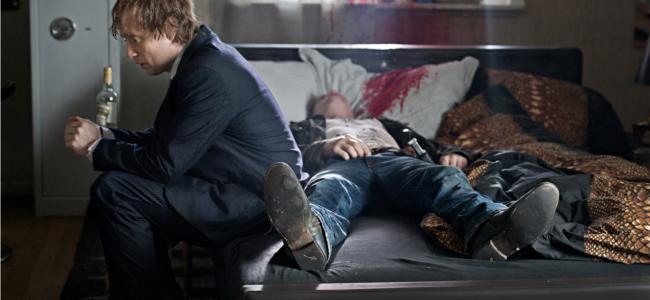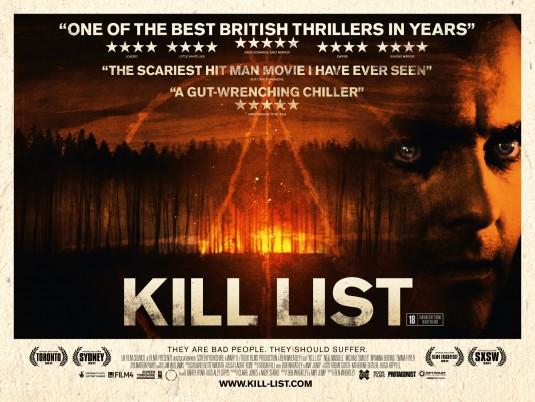Filmmakers have continued to push boundaries and find new innovative ways to elicit the emotions of fear, disgust and horror from viewers. Since Alfred Hitchcock directors strived to provoke viewer’s nightmares, hidden fears, revulsions and terror of the unknown. Although a good deal of it is about the supernatural, others have focused more on a plot about morbidity, serial killers, a disease/virus outbreak, surrealism and more. This year we see vampires, outbreaks, poltergeists, aliens, zombies, and psychological horror/character studies featured on our list.
What is considered to be a horror film has varied from decade to decade. These days, the term “horror” is applied to films which display more explicit gore, jump scenes/scares or supernatural content whereas early horror movies were largely based on classic literature of the gothic/horror genre, such as Dracula, Frankenstein, The Phantom of the Opera, and Dr. Jekyll and Mr. Hyde. I have argued with one of our contributors about whether or not each of these picks belongs in the list but after a long healthy debate, we all agreed they do. The films range from rape and revenge to creature features to horror/comedies but they’ve all managed to do one thing and do it well: They have all found a way to get under our skin; therefore justifying their presence on this list.
Note: Although Tucker And Dale Vs. Evil appeared on our list back in 2010, we have decided to include it here again, since most of the SoS team only saw it in 2011.
26- Insidious
Directed by James Wan
Insidious is great fun and proof that you can make a PG-13 horror movie that is plenty scary without relying on gore. In fact, there are really no gruesome images in the film, which might disappoint fans of director James Wan’s debut, Saw. Wan has re-teamed with his Saw writer and actor Leigh Whannell, who also manages to steal the show as one of the two geek paranormal investigators brought in by the family. The film feels more like the product of the director of Paranormal Activity director Oren Peli and it is, in a way. Peli produced the film and, while it is not another entry in the found footage genre, its visual aesthetic does resemble Paranormal Activity. Insidious also manages to make regular household items and pieces of furniture seem scary. This is actually a much better film than Peli’s, and that is because the characters don’t grate as much. They are believable and behave realistically under the circumstances. Whannell also makes sure to add plenty of humor, making it a hybrid of a horror film and a comedy. … (read the full review)
– Joshua Youngerman
25- Rare Exports: A Christmas Tale
Directed by Jalmari Helander
Written by Petri Jokiranta & Sami Parkkinen
Rare Exports‘s first 45 minutes or so are a delight for any Christmas cynic, teeming as they are with counterintuitive menace and dark humor. Scorn is leveled at the “Coca-Cola” conception of Kris Kringle, and a few grisly images seem to promise a yuletide bloodbath for the ages. … (read the full review)
– Simon Howell
24- Don’t Be Afraid of the Dark
Directed by Troy Nixey
Written by Guillermo del Toro & Matthew Robbins
It’s been nearly 40 years since the 1973 ABC telepic Don’t Be Afraid of the Dark terrified youngsters across the globe – one of them being a 9-year-old Guillermo del Toro, who has since cited it as a major influence on his career. Now comes a remake/re-imagination of that film, penned by Del Toro and Matthew Robbins, and directed by comic book artist Troy Nixey. The trio set out to make a G-rated supernatural thriller for a new generation and despite the absurd MPAA R-rating, Don’t Be Afraid Of The Dark is just that: a perfect gateway into the world of horror films, a tantalizing spine-tingler and one that will hopefully inspire the next Guillermo del Toro. … (read the full review)
– Ricky D
23- The Corridor
Directed by Evan Kelly
Screenplay Josh MacDonald
Director Evan Kelly has crafted a taut thriller and shows great talent in his pacing, and mastery to create a terrifying atmosphere of claustrophobia, suspense and paranoia. The Corridor is a film about male rites of passage, and one which tips its hat to great genre films of the past such as John Carpenter’s The Thing and Deliverance. This microbudgeted indie is a reminder that sometimes the biggest threat to our own lives is sometimes ourselves, but lifelong friendships can be more than enough to get us by. .. (read the full review)
– Ricky D
22- Scream 4
Directed by Wes Craven
Screenplay by Kevin Williamson
This isn’t a comedy, this is a horror movie. People live, People die, people run, but more importantly people scream in Wes Craven’s fourth installment. In horror’s most self-reflexive and in some ways most successful horror franchise, Scream 4 is bloodier, smarter, better and just plain scarier than all three before it. In an era of reboots and remakes, Scream 4 treats its fans with an entry as salient as the original. More importantly Scream 4 obeys the number one rule: “Don’t fuck with the original.” … (read the full review)
– Ricky D
21- Sleep Tight
Directed by Jaume Balagueró
Screenplay by Alberto Marini
It’s no easy task to conduct a captivating, exhilarating film around an absolutely horrendous human being. But in his first follow up to the Rec films, Juame Balagueró not only pulls this off, but, in a nasty piece of filmmaking magic, implicates the audience by encouraging us to care about his troubled protagonist. Sleep Tight is both a tense, relentless thriller and an unsettling portrait of subdued madness. … (read the full review)
– Emmet Duff
20- Stakeland
Written by Jim Mickle and Nick Damici
Directed by Jim Mickle
Amidst the comic-book style exaggerated violence, though, there’s still enough small character beats and subtle touches that make Stake Land ring a little truer than most movies of its kind, particularly Martin’s calm, novelistic narration, and an open-ended conclusion that eschews the usual martyr’s-glory scenes for a character-based ending that validates the film’s palpable sense of hard-fought hope and progress in lost times. … (read the full review)
– Simon Howell
19- The Woman
Directed by Lucky McKee
Written by Lucky McKee and Jack Ketchum
The Woman is both shocking and challenging, revealing a pattern ingrained social misogyny. What is left unsaid about The Woman’s origins reveals a long list of questions we’d prefer not to ask about our preferred social ignorance in regards to abuse. Lucky McGee daringly depicts violence against women that makes you want to look away. It is not titillating but tragic. It has some of the most shocking sexual violence I’ve seen onscreen, perhaps because a lot of it takes place at the edges of the story or offscreen. His inventive mise-en-scene is at once reminiscent of more familiar ironic depictions of underbelly of small town life but with moments of sincere and horrifying imagination. The film’s final moments are wonderfully horrifying in their ambiguity and strange sense of hopefulness. … (read the full review)
– Justine Smith
18- Retreat
Directed by Carl Tibbetts
Written by Janice Hallett & Carl Tibbetts
Unlike 28 Days Later, Retreat is light on action but heavy on dialogue, paranoia and suspense. Elevating the film above your everyday thriller is the emotional depth his characters provide. Each member of the trio strive to gain the upper hand (both physically and psychologically) , and every scene is perfect calculated to stagger our senses. … (read the full review)
– Ricky D
17- Absentia
Directed by Mike Flanagan
Written by Mike Flanagan
Absentia is an instant independent horror gem and one that will leave many audiences scratching their heads. A must-see for those who like their horror to be both intelligent and frequently terrifying. Absentia announces the arrival of a major new talent in director Mike Flanagan… (read the full review)
– Ricky D
16- The Innkeepers
Directed and Written by Ti West
There is a sense in which Ti West is a man (wonderfully) out of step with time. He makes films using techniques and methods seemingly long abandoned. His films build menace and threat slowly, almost imperceptibly. Each isolated moment is easily dismissed, but for those paying attention the dread mounts drop by drop, until you are drowning in fear and the slightest, most miniscule thing: a piano key being played, a beer can falling down a flight of stairs, is enough to send you clawing the ceiling in fright.
For those with the patience for his slow-build cinematic magic, Ti West is a singular genius, and The Innkeepers is his best film to date. … (read the full review)
– Michael Ryan
15- Beyond The Black Rainbow
Directed by Panos Cosmatos
Screenplay Panos Cosmatos
Director Panos Cosmatos pays homage to sci-fi films of the 70′s and 80′s with his first feature Beyond The Black Rainbow, a melting pot rich in bold images and thick in retro atmosphere. While many claim Cosmatos exhibits a Kubrikian influence, Rainbow is best described as follows: a Richard Stanley piece on acid, with a dash of THX 1138, echoes of Solaris, the iconography of Luis Buñuel and Kenneth Anger – the music of John Carpenter, the provocative visions of Dario Argento and David Cronenberg, and a narrative structure reminiscent of David Lynch and Ken Russell. Yet despite its cinematic influences, Cosmatos produces something that has a distinct character all its own. Describing what the film is about is a tough task, but it can be said that Black Rainbow explores notions of inter-dimensional time travel and control, both psychological and physical. … (read the full review)
– Ricky D
14- Outside Satan
Written by Bruno Dumont
Directed by Bruno Dumont
The work of Bruno Dumont is not for the faint of heart. A filmmaker who consistently pushes the boundaries of “morality,” he challenges the audience’s expectations of acceptable screen content. Even his style is alienating as he subverts modes of identification. His newest film, Outside Satan, is borne from the beautiful but grey coastal area of the Cote d’Opale, an area famous for it’s cliffs. The landscape served as the main inspiration for Dumont, who presents a disturbed spiritual journey centered on a nameless outsider who lives on the outskirts of a village-town and his friendship with a young woman who lives there… (read the full review)
– Justine Smith
13- You’re Next
Directed by Adam Wingard
Written by Simon Barrett
The best slasher films don’t just slash. They gouge, smash, trap, impale, stab, and crush. Granted, the genre has become something of an arms race to see who can come up with the best kills, but Wingard’s kills aren’t creative for the sake of being creative. Nor, however, are they dull. They flow with the story and build tension; when the killer isn’t just wielding a machete, death can come from anywhere.
Bottom line: You’re Next breathes new life into the slasher film and stands as an easy recommendation for genre fans. Family reunions are a bitch, and I can’t help but appreciate one that goes worse than my own. … (read the full review)
– Dave Robson
12- Hobo With A Shotgun
Directed by Jason Eisener
Written by John Davies
First-time feature director Jason Eisener and writer John Davies deliver an entertaining, comically violent throwback to low budget 70′s and 80′s genre movies. The skeleton here is that of an an urban western, in which a drifter with dreams of a better life is caught in a lawless town, pushed a little too far, and as a result delivers justice, one shell at a time. Hobo looks and feels like a long lost relative to exploitation features of the Canadian Tax Shelter films from decades past. Working from a simple idea, and constantly delivering on its premise, Hobo’s success can be attributed to the simple fact that the filmmakers rely on building a story first, above the action. Unlike most grindhouse films, the movie doesn’t rely on shock value. Hobo has heart, as does it’s titular character, and in an era of too much blood-for-blood’s-sake, Hobo understands character is action, and stakes are needed. … (read the full review)
– Ricky D
11 – Tucker & Dale Vs. Evil
Directed by Eli Craig
Starring Tyler Labine, Alan Tudyk, Katrina Bowden
What can possibly be said about Tucker & Dale Vs. Evil that hasn’t already been screamed before in a bloody roar from the hilltops? It’s one of those ultra-rare genre movies that manages to perfectly hem horror with comedy, sewing them together with finely-tuned precision, a relentless build, comic-book gore, and loveable characters. It even manages to throw in a romance arc for good measure. Yes, Tucker & Dale is a truly spectacular midnight movie that can be appreciated by all tropes of cinemagoers, but ultimately is made for the FRIGHTFEST crowd – the devoted, dedicated fanboys and girls who sit through year-after-year of misjudged, ill-conceived titles just to unearth something special like this. .. (read the full review)
– Al White
10- Guilty of Romance
Directed by Sion Sono
Japan, 2011
Guilty of Romance may not be Sono’s strongest effort, but it is a significant step up from his previous film, the hateful and dull Cold Fish. It is a compelling journey into a depraved and misunderstood world, and in true Sono form, he subverts just about every aesthetic and moral expectation we may have from his scenario and characters. The film probably has the most interesting female characters in any Sono film (except maybe Exte:Hair Extensions), each fulfilling different aspects of a wider female form and suggesting an ultimate division in our psychology and physiological make-up… (read the full review)
– Justine Smith
9- I Saw The Devil
Directed by Yet, Kim Ji-woon
Korea has produced some of the greatest entries in the serial killer sub-genre over the past ten years, with Memories of Murder and The Chaser being the two prime examples. Kim Ji-woon’s latest epic I Saw the Devil, starring award-winning actors Lee Byung-hun (The Good, The Bad, The Weird) and Choi Min-sik (Oldboy) in the lead roles, clearly sets a new benchmark with its exceptionally graphic violence. The film had to undergo extensive re-editing before its premiere in order to get a theatrical release in Korea. The result is still a shockingly violent, disturbing, dark, brutal and painful film, that pushes the concept of revenge to some extreme limits. … (read the full review)
– Ricky D
8- The Yellow Sea (Hwang Hae)
Directed by Na Hong-jin
7- Snowtown
Directed by Justin Kurzel
Written by Shaun Grant
Just as in 2010, a first-time Australian filmmaker has delivered an uncommonly accomplished debut crime drama, about an innocent teen corrupted by the poisonous, sociopathic tutelage of a deranged father figure. The principle difference, though, between David Michôd’s Animal Kingdom and Justin Kurzel’s Snowtown is that the latter film is based on a horrific true story. In fact, the real distinction isn’t merely that Snowtown is based on a true story, but that, thanks to hugely authentic, partly improvised performances from a cast of non-professionals, it feels like a true story, both tragic and terrifying. In a convenient piece of symmetry, the notable exception is Daniel Henshall, who plays John Bunting, known as “Australia’s worst serial killer.” Henshall gives one of the festival’s standout performances as the charismatic Bunting, his magnetism enhanced by the fact that many of the cast – drawn from the depressed area where the crimes occurred and the film was shot – knew him from his work on Australian TV. It’s a bleak, disturbing film, but as much as the murders themselves – which mainly occur off-screen – it’s Kurzel’s portrait of the prevailing, festering deprivation that devastates. … (read the full review)
– Jullian Carrington
6- Headhunters
Directed by Morten Tyldum
Screenplay by Lars Gudmestad by Ulf Ryberg
Summit Entertainment recently picked up the production rights to Jo Nesbo’s novel “Headhunters”. Clearly, somebody just saw Morten Tyldum’s awesome film adaptation.
This is an astonishingly mature, exhilarating thriller and a personal favorite at Fantastic Fest 2011. This film is watertight. And even if you aren’t surprised by the wild pivoting the film executes, you will be completely impressed by the thorough detail behind each pivot. Tyldum is not a careless man, and he relays Nesbo’s tale with careful respect. And the actors deserve equal praise for imbuing this adrenaline rush of a film with heady, grounding emotion, and refreshing playfulness. Hopefully the American version can milk as much excitement and pathos from the source material–maybe somebody call that Matt Reeves fellow? … (read the full review)
Emmet Duff
5- Attack the Block
Written by Joe Cornish
Directed by Joe Cornish
That idea of balance is key to the success of Attack the Block – scary but not too scary, funny but with respect for its characters, specific to its cultural geography but universal in its ideas, rapidly paced but always clearly staged. Beholden to any number of spiritual forbears (from The Warriors to the unproduced John Sayles script Night Skies, hailed by Cornish in promotional materials), Attack nevertheless emerges as very much its own movie – one fiercer, faster and funnier than any of its peers. … (read the full review)
– Simon Howell
4- Kill List
Directed by Ben Wheatley
Written by Ben Wheatley
Apart from all else, Kill List features the best buddy-assassin duo since Quentin Tarantino treated cinephiles to the legendary Pulp Fiction pairing of Jules Winfield and Vincent Vega. But where Jules and Vince traded QT’s signature, pop-culture repartee, Kill List‘s Jay (Niel Maskell) and Gal (Michael Smiley) share the uncannily naturalistic banter of genuine, lifelong best mates. How director Ben Wheatley manages to balance elements of social realism – TIFF’s synopsis invokes Mike Leigh with good reason – with caustic humour, extreme, graphic violence, and plenty of frantic WTF-ery, is a mystery nearly as indecipherable as the one that propels the film forward like a speeding, high-calibre slug. But balance those elements he does, and with a deftness that belies his stature as only a second-time filmmaker. (His debut was 2009′s dark crime comedy, Down Terrace.) On the evidence of Kill List’s late film insanity, a deal with the devil can’t be ruled out. Indeed, Satanic inspiration almost seems likely, given an ending that will live in infamy, topping perhaps even Se7en’s anguished “What’s in the baaaahx?” conclusion. … (read the full review)
– Julian Carrington
3- Martha Marcy May Marlene
Directed by Sean Durkin
Screenplay by Sean Durkin
A sister project to his short Mary Last Seen, MMMM is a must see and ranks as one of the greatest directorial debuts of all time. Those who don’t like their endings to be cut and dry may be disappointed, and while mainstream America won’t take the time to appreciate this work of art, Martha Marcy May Marlene will surely find its own cult following… (read the full review)
– Ricky D
2- Take Shelter
Directed by Jeff Nichols
Written by Jeff Nichols
Michael Shannon captivates as a portrait of paternal paranoia in Take Shelter, the terrifically affecting sophomore effort from Jeff Nichols, an apparent master in the making. When rural Ohio everyman Curtis LaForche (the typically indelible Shannon) is wracked by tempestuous dreams of his family’s annihilation, his maternal history of schizophrenia makes the potential implications doubly ominous. Aware that he’s predisposed to delusion, his visions are nonetheless so vivid and violent that he’s compelled to act. Unbeknownst to his wife (Jessica Chastain, in the midst of a deservedly meteoric rise), he invests in costly renovations to a derelict backyard storm cellar, despite the impending expense of surgery to restore his daughter’s hearing. That his frighteningly-realised hallucinations also begin to tax his workplace relations adds to the film’s charged, foreboding air. Purely on the level of psycho-familial drama, award-worthy performances from Shannon and Chastain justify the price of admission. But it’s Nichols’ powerful allegory for contemporary economic and political uncertainty – punctuated by awesome evocations of natural fury – that girds Take Shelter with a timely, unsettling resonance. … (read the full review)
– Jullian Carrington
1- We Need To Talk About Kevin
Written by Lynne Ramsay and Rory Kinnear
Directed by Lynne Ramsay
We Need to Talk about Kevin comes across best as a bad parenting / bad-seed horror movie, and if you would like to classify it as such, it might just be the best genre film of the year. Kevin himself is over the top, cartoonish and seemingly born bad; he seems lifted from the pages of the latest Stephen King novel. Many critics have criticized the film for the character’s portrayal, but they seem to be missing the point. We Need To Talk About Kevin is all about perception – in this case, in how Eva perceives the world, how she regards her son and how she views situations in her past. Notice how Kevin only shows his true colours when he and his mom are alone together. When anyone else is present the boy appears to be an innocent. One would assume the movie is about its titular character, but the movie really isn’t about Kevin at all. It’s about Swinton’s Eva, her guilt, regret and loss; therefore the movie largely takes place in her tormented mind. … (read the full review)
– Ricky D

